Neolithic: Figurines and models
Presentation
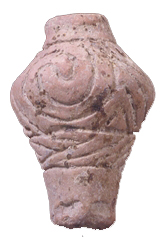 |
Like most Neolithic and Chalcolithic sites in the Balkans, excavations at Dikili Tash have recovered hundreds of ceramic models and animal and human figurines. They are relatively rare in the LN I layers, but fairly common during the LN II.
The models represent furniture (stools, chairs, and tables), combustion structures (hearths and ovens), or entire houses, and are frequently decorated. Miniature vessels should probably also be included in this category. Animal figurines, whose fragments are difficult to distinguish from zoomorphic vessels, are generally crudely modelled: they have only some anatomic details (horns, muzzle, ears, eyes, and tail) and rarely any decorative elements. They are often quadrupeds (e.g., bovid, bear, goat/sheep), which are generally impossible to identify precisely, whereas there exists a larger two-headed variant. Animal figurines are sometimes found in groups. |
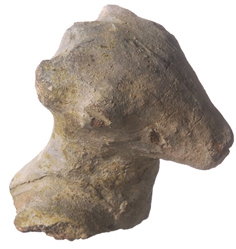 |
 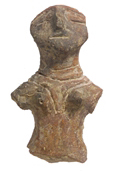 |
Human figurines, whose heads can easily be confused with spoon handles, are sometimes associated with models. Some of them are quite schematic, with arms reduced to stumps, and have no decoration; they can be sexless. Others are more naturalistic and represent mainly wide-hipped females, either standing or sitting, and only exceptionally men. They are often decorated with incisions and painted motifs that could represent clothes, jewellery, tattoos, body paintings or masks; it is very difficult to determine which. At least two size-groups are identified. These three types of objects compose a group that has long been compared to children’s toys that are attested in many other civilisations, a designation that relies on their miniaturisation. This interpretation, although supported by several arguments, has often been overlooked in favour of religious hypotheses, which see figurines as representations of the Mother Goddess. This interpretation has become a stereotype through a rather mechanistic repetition by archaeologists. Recently it has been proposed that these objects might instead constitute means or ‘tools’ of communication, with essentially social functions; assumptions have been also made concerning their fragmentation, which some consider deliberate. However, before discussing nature or function, it is necessary to study more closely the discovery contexts, manufacturing techniques, and the positioning of the figures. Size scales should also be determined and categorized. These steps would likely lead us to conclude that these objects have more than one function: toys being one universal and common possibility, but also other functions known from ethnology: fetishes, ancestors’ portraits or commemorative instruments. |
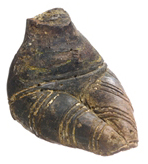 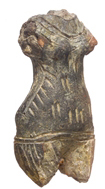 |

